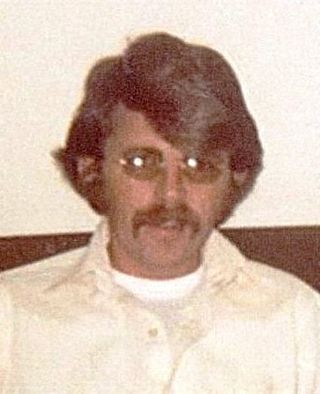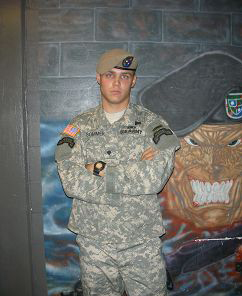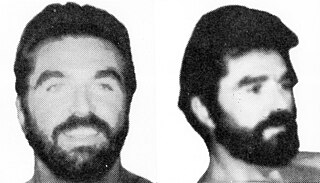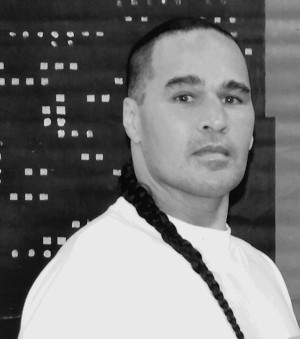Related Research Articles

Bank robbery is the criminal act of stealing from a bank, specifically while bank employees and customers are subjected to force, violence, or a threat of violence. This refers to robbery of a bank branch or teller, as opposed to other bank-owned property, such as a train, armored car, or (historically) stagecoach. It is a federal crime in the United States.

The Aryan Republican Army (ARA), also dubbed "The Midwest Bank bandits" by the FBI and law-enforcement, was a white nationalist terrorist gang which robbed 22 banks in the Midwest from 1994 to 1996. The bank robberies were spearheaded by Donna Langan. The gang, who had links to Neo-Nazism and white supremacism, were alleged to have conspired with convicted terrorist Timothy McVeigh in the months before the Oklahoma City bombing terrorist attack. Although it has never been proven, many theorists believe the ARA funneled robbery money to help fund the bombing as a direct response to the Waco and Ruby Ridge sieges.

John Stanley Joseph Wojtowicz was an American bank robber whose story inspired the 1975 film Dog Day Afternoon.

The death of Brian Wells took place on August 28, 2003, after Wells, a pizza delivery man, robbed a PNC Bank near his hometown of Erie, Pennsylvania, United States. Upon being apprehended by police, Wells was murdered when an explosive collar locked to his neck detonated. The plot subsequently uncovered has been described as "one of the most complicated and bizarre crimes" in the history of the Federal Bureau of Investigation (FBI).
The Montana Freemen were an anti-government militant Christian Patriot group based outside the town of Jordan, Montana, United States. The members of the group referred to their land as "Justus Township" and had declared their leaders and followers "sovereign citizens" no longer under the authority of any outside government. They became the center of public attention in 1996 when they engaged in a prolonged armed standoff with agents of the Federal Bureau of Investigation (FBI).
Clayton Lee Waagner is an American convicted bank robber and anti-abortion terrorist. He was born Roger Waagner in North Dakota. He was an escaped fugitive during the spring, summer and fall of 2001 and was the FBI's 467th fugitive to be placed on the Ten Most Wanted list for carjackings, firearms violations, and bank robbery on September 21, 2001. He was placed on the United States Marshals Service Top 15 Fugitives list for sending more than 280 letters that claimed to contain anthrax, which he mailed to Planned Parenthood with return addresses of the Marshals Service and the Secret Service beginning in October 2001. He is currently in prison.

Attila Ambrus, alias The Whiskey Robber, is a Hungarian bank robber and professional ice hockey player. He became notorious during the 1990s for committing a string of undercover "gentleman robberies" in and around Budapest, Hungary, while working a day job as a goaltender. He became infamous in Hungary as a folk hero symbolic of the times in the decade after the introduction of capitalism to the former Communist state. Ambrus was eventually caught and imprisoned for about 12 years, released in 2012. His story was told in the 2004 book Ballad of the Whiskey Robber by author Julian Rubinstein and the 2017 film A Viszkis directed by Nimród Antal.

Leslie Isben Rogge is an American criminal and bank robber. He became the first criminal in the FBI's Ten Most Wanted to be caught due to the Internet.

Fleet Robert Current was an American bank robber and listed on the FBI's Ten Most Wanted list in 1953.

Luke Elliott Sommer is a former US Army Ranger and bank robber. After almost two years under house arrest in Canada, he pleaded guilty on May 27, 2008 to the August 7, 2006 robbery of a branch of the Bank of America in Tacoma, Washington. Sommer is currently serving his sentence at Coleman II USP.

Luis de la Garza is currently in prison arrested by the FBI for bank robbery. used to be a television executive, businessman, and community leader in Texas. He is the recipient of numerous community awards for his personal success in business and media, as well as for his efforts to assist other Mexican-American entrepreneurs to start their own businesses. To the shock of his family and many who have worked with him, de la Garza was arrested on suspicion of being a serial bank robber on June 22, 2013. He subsequently pleaded guilty to bank robbery charges and is currently serving a 20-year federal prison sentence.
The United States Penitentiary, Canaan is a high-security United States federal prison for male inmates, with a satellite prison camp for minimum-security male inmates. It is operated by the Federal Bureau of Prisons, a division of the United States Department of Justice.

Patrick Michael "Paddy" Mitchell of Ottawa, Ontario, was leader of the notorious "Stopwatch Gang" of bank robbers. Mitchell was on the Federal Bureau of Investigation's most wanted list for the Stopwatch Gang's bank robberies across the United States.
The Cretzer-Kyle Gang was a Depression-era criminal group led by Joseph "Dutch" Cretzer and Arnold Thomas Kyle during the mid-to late 1930s. Largely active in the West Coast, they were one of the few groups to gain national attention outside the Midwest and also one of the last groups to be captured by the FBI at the end of the decade. Cretzer was killed in a failed attempt to escape Alcatraz resulting in the 1946 prison riot.

Frederick Grant Dunn (1905–1959) was an American criminal, burglar and bank robber whose career spanned over four decades from 1919 until his mysterious death in 1959. He led a small gang during the 1940s and 1950s, Dunn becoming referred to by the press as "the modern John Dillinger", and whose activities eventually resulted in his being listed on the FBI's Ten Most Wanted in 1958.
Shon Robert Hopwood is an American appellate lawyer and professor of law at Georgetown University Law Center. Hopwood became well-known as a jailhouse lawyer who served time in prison for bank robbery. While in prison, he started spending time in the law library, and became an accomplished United States Supreme Court practitioner by the time he left in 2009.

Fred William Bowerman was an American bank robber and Depression-era outlaw.

The United States Penitentiary, Victorville, CA is a high-security United States federal prison for male inmates in California. It is part of the Federal Correctional Complex, Victorville and is operated by the Federal Bureau of Prisons, a division of the United States Department of Justice.
Anthony Hathaway is an American man known for robbing thirty banks in Washington State between 2013 and 2014 to pay for his drug addiction. He is featured on the 2021 Apple TV+ podcast Hooked.

Byron Shane Chubbuck, also known as Robin the Hood or Oso Blanco de Aztlán is a convicted American bank robber and indigenous activist. Starting in 1998, Chubbuck would rob numerous banks until he was captured in August 1999. During his criminal run, he informed bank tellers that the money which he stole would go towards the indigenous Zapatista army in Southern Mexico. After being charged with 13 counts of bank robbery and 1 count of attempted bank robbery, he was imprisoned at Santa Fe County Jail, where he remained until his escape in December 2000.
References
- ↑ "Man's Confession Ends Robbery Career: 56 Banks in 8 Years". The New York Times. July 14, 1994. Retrieved April 12, 2017.
- ↑ RICCARDI, NICHOLAS (July 12, 1994). "FBI Celebrates Capture of 'the Shootist': Crime: Bank robbery suspect is notorious for allegedly firing gunshots into ceilings". Los Angeles Times. Retrieved April 12, 2017.
Williams needed money for his gambling habit
- 1 2 3 "Man's Confession Ends Robbery Career: 56 Banks in 8 Years". The New York Times. July 14, 1994. Retrieved April 23, 2009.
- 1 2 3 4 Boss, Kit (January 7, 1996). "The Shootist -- John And Carol Robbed Banks. How Long Could A Life -- And Love -- Like Theirs Last". Seattle Times. Retrieved April 23, 2009.
- ↑ "'The Shootist' Bank Robber Sentenced to Nearly a Century in Prison". Associated Press News. SEATTLE: www.apnewsarchive.com. January 21, 1995. Retrieved April 12, 2017.
- ↑ "Local News | 'Shootist,' Wife Sentenced | Seattle Times Newspaper". Seattle Times Staff. SEATTLE. community.seattletimes.nwsource.com. January 22, 1995. Retrieved April 12, 2017.
- ↑ Carter, Mike (January 10, 2021). "Hard justice gives way to compassion as federal courts move to release Western Washington inmates vulnerable to COVID-19". The Seattle Times. Retrieved January 11, 2021.